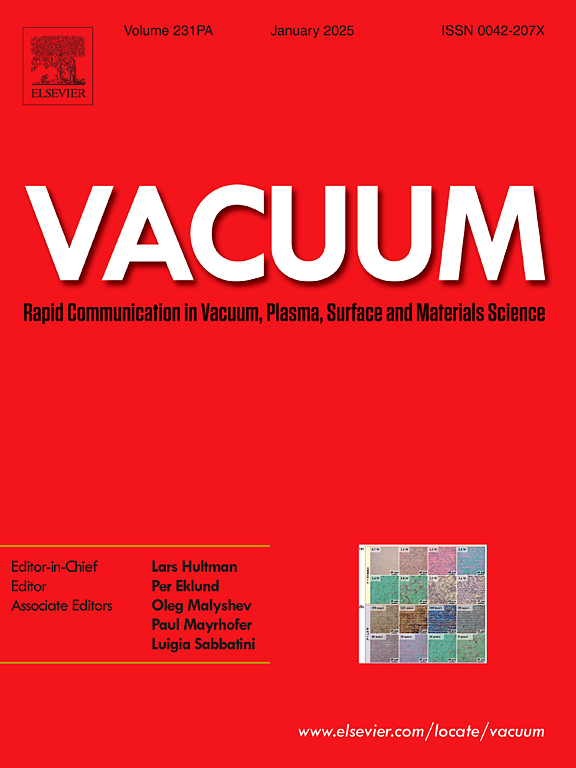The impact of Ni and Zn doping on the stability, electrical and thermal conductivity of intermetallic compounds between Sn solder and Cu substrate
IF 3.8
2区 材料科学
Q2 MATERIALS SCIENCE, MULTIDISCIPLINARY
引用次数: 0
Abstract
First-principles calculations, grounded in density functional theory and augmented by the Boltzmann transport theory, have been conducted to scrutinize the influence of Ni and Zn doping on Cu-Sn IMC interfaces. These calculations, which factor in a radius parameter, shed light on the effects to interfacial stability, electronic structure, bonding properties, and the conductive behaviors—both electrical and thermal. The doping of Ni elements increases the absolute value of the interfacial formation enthalpy, enhancing its stability, while the doping of Zn elements reduces the absolute value of the formation enthalpy, decreasing its stability. The calculation results of the ideal adhesion work Wad indicate that all Cu-Sn-X (X: Ni, Zn)/Cu interface models are stable, with Wad >0. Due to the transfer of electrons and the hybridization of electronic orbitals at the Cu-Sn-X (X: Ni, Zn)/Cu interface, chemical bonds with both covalent and ionic characteristics are formed. Doping the Cu-Sn IMC/Cu system with Ni and Zn in place of Cu and Sn atoms leads to a reduction in the quantity of free electrons, consequently lowering the system's electrical and thermal conductivities.
Ni和Zn掺杂对锡焊料与Cu衬底间金属间化合物稳定性、电导率和导热性的影响
基于密度泛函理论和玻尔兹曼输运理论的第一性原理计算,研究了Ni和Zn掺杂对Cu-Sn IMC界面的影响。这些计算考虑了半径参数,揭示了对界面稳定性、电子结构、键合性能和导电行为(包括电和热)的影响。Ni元素的掺杂增加了界面生成焓的绝对值,增强了其稳定性,而Zn元素的掺杂降低了界面生成焓的绝对值,降低了其稳定性。理想粘附功Wad的计算结果表明,Cu- sn -X (X: Ni, Zn)/Cu界面模型均稳定,Wad >;由于Cu- sn -X (X: Ni, Zn)/Cu界面上电子的转移和电子轨道的杂化,形成了共价键和离子键。在Cu-Sn IMC/Cu体系中掺杂Ni和Zn代替Cu和Sn原子,可以减少自由电子的数量,从而降低体系的导电性和导热性。
本文章由计算机程序翻译,如有差异,请以英文原文为准。
求助全文
约1分钟内获得全文
求助全文
来源期刊

Vacuum
工程技术-材料科学:综合
CiteScore
6.80
自引率
17.50%
发文量
0
审稿时长
34 days
期刊介绍:
Vacuum is an international rapid publications journal with a focus on short communication. All papers are peer-reviewed, with the review process for short communication geared towards very fast turnaround times. The journal also published full research papers, thematic issues and selected papers from leading conferences.
A report in Vacuum should represent a major advance in an area that involves a controlled environment at pressures of one atmosphere or below.
The scope of the journal includes:
1. Vacuum; original developments in vacuum pumping and instrumentation, vacuum measurement, vacuum gas dynamics, gas-surface interactions, surface treatment for UHV applications and low outgassing, vacuum melting, sintering, and vacuum metrology. Technology and solutions for large-scale facilities (e.g., particle accelerators and fusion devices). New instrumentation ( e.g., detectors and electron microscopes).
2. Plasma science; advances in PVD, CVD, plasma-assisted CVD, ion sources, deposition processes and analysis.
3. Surface science; surface engineering, surface chemistry, surface analysis, crystal growth, ion-surface interactions and etching, nanometer-scale processing, surface modification.
4. Materials science; novel functional or structural materials. Metals, ceramics, and polymers. Experiments, simulations, and modelling for understanding structure-property relationships. Thin films and coatings. Nanostructures and ion implantation.
 求助内容:
求助内容: 应助结果提醒方式:
应助结果提醒方式:


